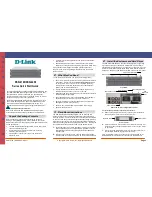
50
•
RP discovery
•
DF election
•
Bidirectional RPT building
Neighbor discovery
BIDIR-PIM uses the same neighbor discovery mechanism as PIM-SM does. For more information, see
"
RP discovery
BIDIR-PIM uses the same RP discovery mechanism as PIM-SM does. For more information, see "
In PIM-SM, an RP must be specified with a real IP address. In BIDIR-PIM, however, an RP can be specified
with a virtual IP address, which is called the rendezvous point address (RPA). The link corresponding to
the RPA's subnet is called the "rendezvous point link (RPL)." All interfaces connected to the RPL can act
as the RP, and they back up one another.
In BIDIR-PIM, an RPF interface is the interface pointing to an RP, and an RPF neighbor is the address of
the next hop to the RP.
DF election
On a network segment with multiple multicast routers, the same multicast packets might be forwarded to
the RP repeatedly. To address this issue, BIDIR-PIM uses a DF election mechanism to elect a unique DF for
each RP on every network segment within the BIDIR-PIM domain, and allows only the DF to forward
multicast data to the RP.
DF election is not necessary for an RPL.
Figure 24
DF election
As shown in
, without the DF election mechanism, both Router B and Router C can receive
multicast packets from Router A. They might both forward the packets to downstream routers on the local
subnet. As a result, the RP (Router E) receives duplicate multicast packets. With the DF election
mechanism, once receiving the RP information, Router B and Router C initiate a DF election process for
the RP:
Ethernet
Router B
Router C
Router A
Multicast packets
DF election message
RP
Source
Router D
Router E
















































